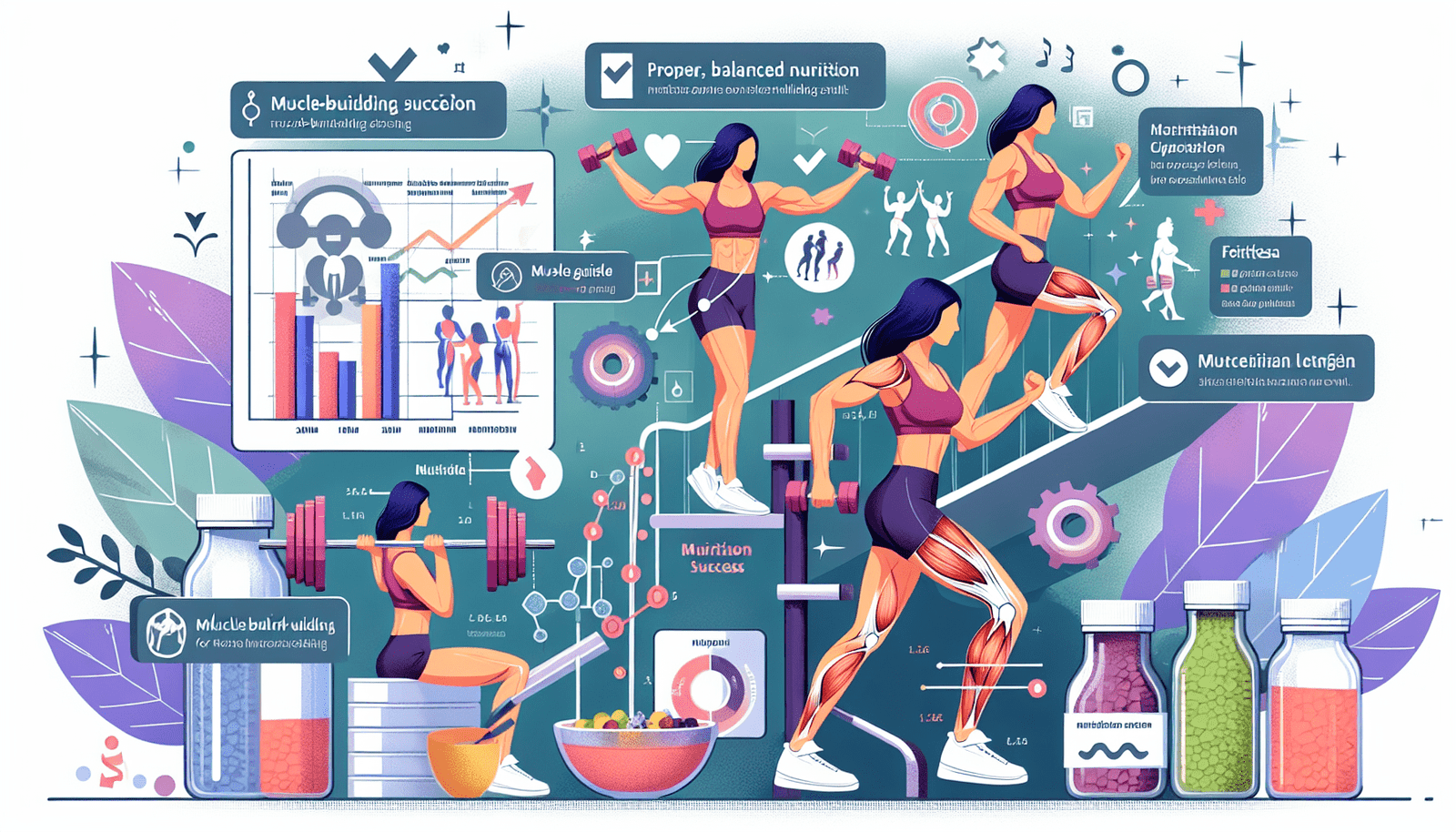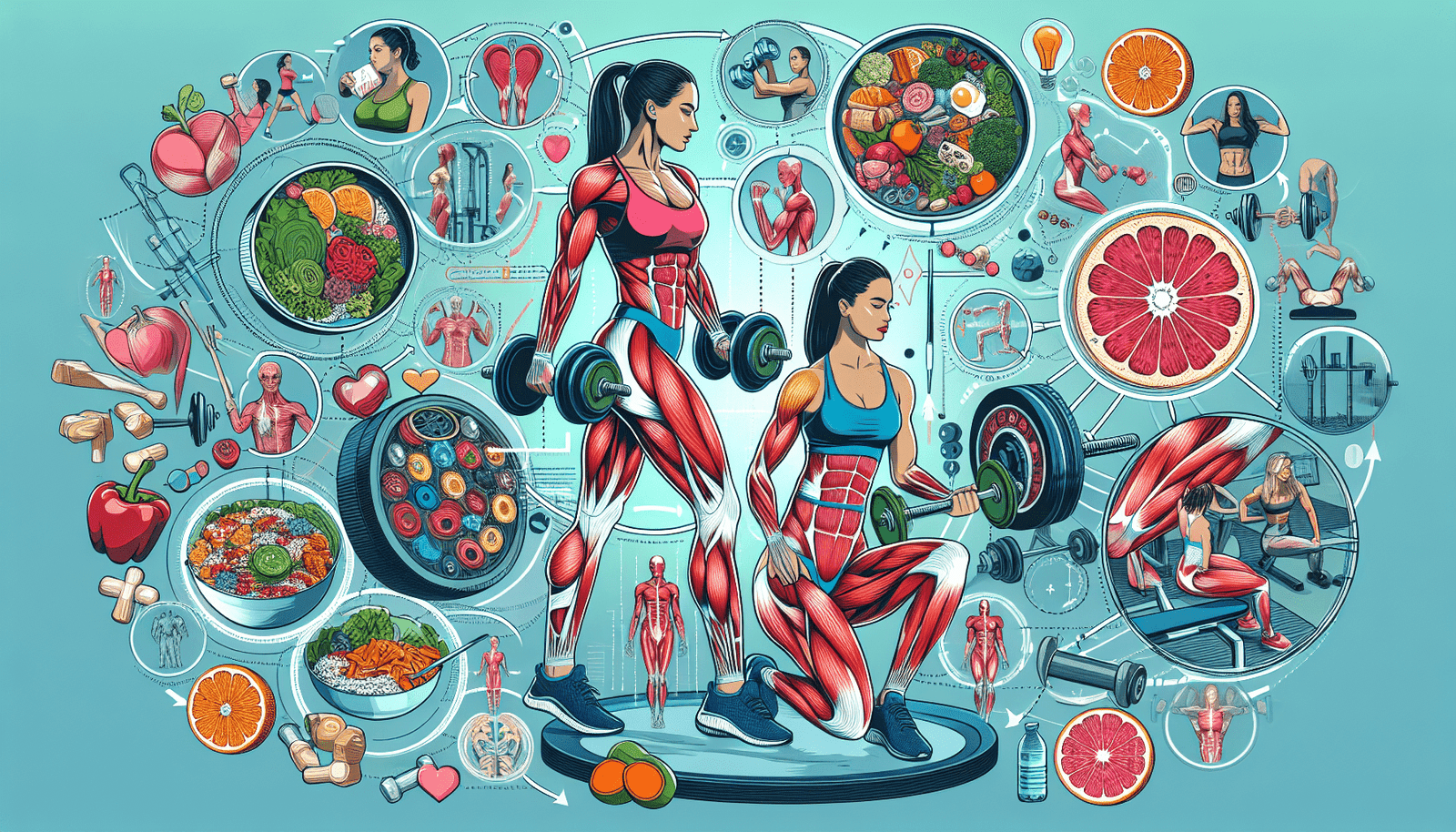How to Successfully Build Muscle in Women: An FAQ Guide
Understanding how to build muscle in women effectively is an essential topic many people seek knowledge about. The article “How to Successfully Build Muscle in Women: An FAQ Guide” gives you the answers. Here, you’ll find reliable answers to your pressing questions about muscle building in women, simplified for your easier understanding. From the science of muscle growth to the most effective workouts, this guide will set you up for success in your fitness journey. So, get ready to feed your curiosity, educate yourself, and ultimately sculpt the body you dream of.
Understanding Body Composition
Body Composition is a critical factor to consider when striving for overall health and fitness. It refers to the makeup of your body, divided into different components, such as muscle, fat, bone, and water. This is more than just weight; it is the proportion of fat to non-fat mass, including muscle, bone, and water.
Importance of knowing your body fat percentage and muscle mass
Knowing your body fat percentage and muscle mass is crucial in monitoring progress and adjusting your fitness and dietary routine. High body fat percentage can increase the risk of various health conditions like heart disease and diabetes. On the other hand, a healthy muscle mass contributes to strength, mobility, and metabolic efficiency.
How body composition changes with weight training
Engaging in exercises, like weight training, helps to increase muscle mass, which in turn, helps to reduce body fat percentage. The reason is straightforward – muscle burns more calories than fat, thereby altering your body composition in favor of a lean, fit physique.
Reference body composition for women
Body composition can greatly differ between men and women due to differences in hormones and body structure. A healthy range of body fat percentage for women can lie between 20-30%, while muscle mass typically accounts for around 36-42% of body weight, depending on individual fitness level and training regimen.
Role of Nutrition in Muscle Building
Nutrient-dense food plays a central role in muscle building. Eating the right proportions of macronutrients – protein, carbohydrates, and fats – supports your body in recovering from workouts, as well as in growing stronger muscles.
Importance of protein in muscle building
Protein is the building block of muscles, serving as their key constituent. It aids in repairing muscle tissues damaged during workouts, helping them get larger and stronger. Lower consumption of protein may lead to slower muscle recovery and limited muscle growth.
Recommended daily intake of protein for active women
Active women, particularly those engaged in resistance or strength training, are recommended to intake between 1.2 to 2.0 grams of protein per kilogram of body weight each day. This aids in optimal muscle synthesis and recovery.
Best sources of protein
High-quality proteins are typically found in lean meats, eggs, dairy, fish, and plant-based foods like lentils, chickpeas, quinoa, and hemp seeds. Other diet staples for protein benefits include Greek yogurt, cottage cheese, and protein shakes.
Role of carbs and fats
Along with protein, carbohydrates, and fats play equally critical roles in muscle building. Carbohydrates act as fuel during high-intensity workouts and help restore glycogen levels post-training, promoting recovery. Fats, particularly Omega-3 fatty acids, assist in joint health and reducing inflammation, aiding recovery.

Resistance Training Basics
Resistance training is a form of strength training that involves challenging your muscles with a force (like gravity, dumbbells, or your own body weight). It includes exercises such as squats, push-ups, lifting weights, etc.
Understanding the concept of resistance training
Resistance training encourages the muscles to oppose a force, and in response, they grow stronger. It’s the principle of ‘use it or lose it’. When your muscles face resistance, they adapt and become capable of handling that resistance more efficiently.
Benefits of lifting weights for women
Lifting weights for women offers numerous benefits like improved bone density, higher metabolic rate, increased physical strength, and enhanced body composition. It could also help in enhancing mood and reducing stress levels.
Ideal weights to start with
The ideal weight to start with depends on your current fitness level. Opt for a weight that challenges you enough to complete the last two reps of your set with difficulty. However, ensure that it’s not so heavy that it leads to improper technique.
Recommended resistance exercises
Some recommended resistance exercises for women include squats, lunges, deadlifts, bench press, and pull-ups. These exercises incorporate multiple muscle groups, leading to improved overall strength and muscle gain.
Training Frequency and Volume
Determining the right frequency and volume of training is key in muscle building, as it provides a system for growth and recovery, both integral to gains.
Ideal number of training days per week
The ideal number of training days per week depends on your individual schedule and recovery capacity. A good starting point is 3-4 times a week, focusing on different muscle groups in separate sessions.
Understanding workout volume and intensity
Workout volume refers to the total amount of work done in a session, usually calculated as sets x reps x weight. Intensity relates to the weight lifted in comparison to your maximum potential. Greater volume or intensity can stimulate muscle growth, but finding a balance between both is key to avoid overtraining.
Importance of workout consistency
Being consistent with your workouts is more important than having perfect, intense sessions. Remember, muscle growth happens over time and with consistent pressure – rarely in single, spur-of-the-moment sessions.

Recovery and Rest
In muscle building, rest isn’t just about taking time off; it’s a pivotal part of the process. Your muscles grow and adapt during rest periods, especially during sleep.
Importance of getting ample rest between workouts
Rest periods between workouts are important for muscle recovery and growth. It allows time for muscles to repair and grow stronger. Skipping rest could hinder your progress, leading to fatigue, overtraining, and possible injury.
Understanding the role of sleep in muscle recovery and growth
Sleep plays a critical role in muscle recovery and growth. During deep sleep, growth hormone is released, aiding in repair, recovery, and muscle construction. Inadequate sleep can inhibit this process and limit muscle gain.
Rest period between sets
Rest periods between sets are necessary to allow muscles to recover and prepare for the next set. Typically, 1-3 minutes of rest is recommended between sets, depending on the intensity of the workout.
Importance of Progressive Overload
Progressive overload is key to continued muscle growth. It involves gradually increasing the stress placed on the body during exercise, prompting it to adapt and grow stronger.
Understanding the principle of progressive overload
The principle of progressive overload necessitates that in order to grow, muscles must be continually challenged to perform at levels at which they’re not accustomed. This can be achieved by gradually increasing weight, repetitions, sets, or training frequency.
How to gradually increase workload in exercises
Adding more weight is the most direct way to increase intensity but not the only one. Adding more reps, sets, or reducing rest time between sets are also useful ways of employing progressive overload.
Signs that you need to increase your weights or reps
When you find that you can finish your set without feeling ‘challenged,’ it’s a sign you need to increase your weights or reps. Also, if you’re no longer experiencing muscle soreness or seeing changes in terms of muscle growth, it’s likely time to up the ante.

Cardio and Muscle Building
Cardiovascular exercise, though typically associated with fat loss, can play an important role in muscle building. However, striking a balance is key.
Role of cardiovascular exercise in muscle building
Cardio exercise can support muscle building by improving oxygen delivery and nutrients to the muscles, promoting recovery. It can also increase training capacity by enhancing cardiovascular health.
Optimizing the balance between cardio and resistance training
Balancing cardio and resistance training depends on your individual goals. A general guideline might be to limit cardio to about 2-3 times per week if muscle building is the primary target.
Best types of cardio for muscle building
Lower impact cardio exercises like cycling, swimming, or incline walking preserve muscle while effectively burning fat. High-Intensity Interval Training (HIIT) can be helpful as it stimulates muscle building and burns fat simultaneously.
Supplements for Muscle Building
Supplements can offer an additional boost to your muscle-building efforts, but it’s crucial to understand that they are not replacements for a balanced diet.
Commonly recommended supplements for muscle growth
Creatine and protein supplements are commonly recommended for muscle growth. They aid in muscle recovery and growth by providing the necessary nutrients essential for these processes.
Understanding the role of creatine and protein supplements
Creatine boosts the formation of ATP, your body’s energy currency, allowing for increased workout intensity. Protein supplements, on the other hand, make up for any deficit in dietary protein, aiding muscle repair and growth.
Potential side effects and precautions
Supplements should be used cautiously as high consumption can have side effects. Protein supplements, if consumed excessively, can tax kidney function, and creatine may cause muscle cramping, nausea, or dizziness. Always consult a healthcare professional before starting any supplement regimen.

Importance of Hydration
Staying hydrated plays a significant role in maintaining overall health, but it’s notably critical for muscle building.
How water supports muscle growth
Water supports muscle growth by transporting nutrients to your muscles, lubricating your joints, and facilitating various body functions that are crucial for muscle building.
Recommended daily water intake
The amount of water intake varies depending on factors like age, weight, physical activity, and climate. As a general rule of thumb, aim to drink at least half your body weight (in lbs) in ounces of water each day.
Signs of dehydration
Signs of dehydration include thirst, dry mouth, fatigue, dark yellow urine, and decreased urine output. Proper hydration is crucial for muscle growth and recovery, so don’t ignore these signs and ensure you’re drinking up!
Long-term Strategy for Muscle Building
Building muscle is not a short-term goal; it requires dedication, patience, and a long-term approach. Remember that consistency is key to sustainable results.
Setting realistic muscle gain goals
Setting realistic goals is essential for motivation and perspective. For women, a realistic rate of muscle gain is about 0.5-1 lb of muscle per month. Also, don’t forget that progress is not just about weight. It could also be about strength gains, improved fitness levels, or a better, healthier look.
Understanding training plateaus
Plateaus are inevitable in your training journey, but they are not permanent. Adapt your workout routine, try different exercises, change rep ranges, or introduce new stimuli when you hit plateaus.
Importance of maintaining a positive mindset
Maintaining a positive mindset can be as crucial as your workout routine. Remember, every bit of effort counts, every workout matters, and every healthy meal helps. Celebrate your small victories and keep the bigger picture in mind.
Building an effective and sustainable workout routine
At the heart of a successful muscle-building journey lies an effective and sustainable workout routine. The best routine is the one that aligns with your lifestyle, can be consistently followed, and keeps you engaged and excited.
In conclusion, muscle building for women involves considerations about nutritional intake, resistance training, recovery protocols, and a consistent, sustainable approach. With time, effort, and a lot of persistence, you’ll be on your way to a stronger, leaner, and healthier physique. Remember to enjoy the process and keep learning as you journey through your fitness path.


